Komodo Dragon Habitat
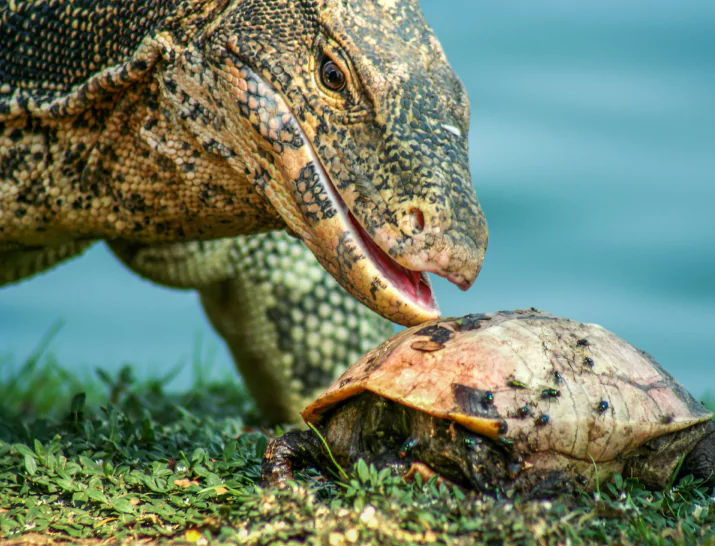
Komodo Dragon Habitat
The Komodo dragon, scientifically labeled (Varanus komodoensi)s, stands as an imposing and legendary species that calls the Indonesian archipelago home. Its immense proportions, formidable hunting prowess, and prehistoric visage have captured the imaginations of individuals across the globe. Yet, to truly grasp the essence of these remarkable reptiles, one must embark on a journey into the enigmatic heartland of their environment – the rugged, mystical isles of Komodo, Rinca, Flores, and Gili Motang.
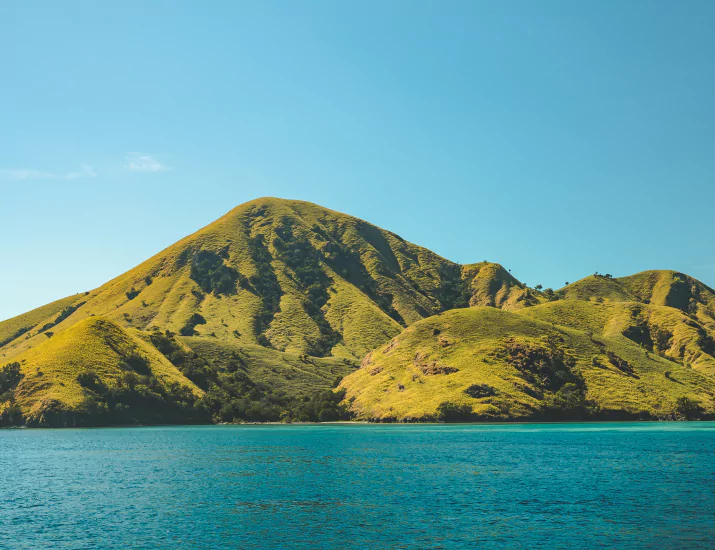
Geographic Komodo Dragon Habitat
The Komodo dragon’s habitat is primarily limited to a handful of islands within the Lesser Sunda Archipelago, located in eastern Indonesia. These islands, including Komodo, Rinca, Flores, and Gili Motang, form the heart of the Komodo dragon’s territory. The archipelago’s remote location has played a significant role in shaping the unique environment that these dragons call home.
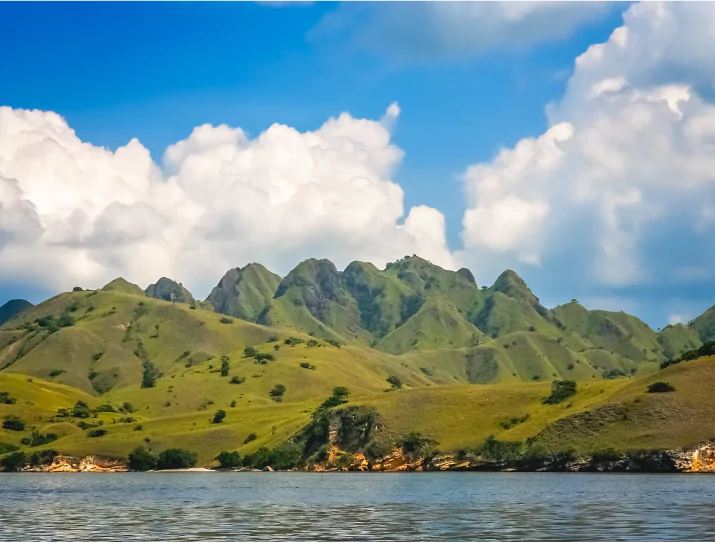
The Lesser Sunda Archipelago
Nestled within the Lesser Sunda Archipelago, a chain of islands extending eastward from Bali, lie the remote islands where the Komodo dragon reigns supreme. This secluded realm, far removed from the urban bustle of Indonesia, has served as an unspoiled haven for these ancient reptilian giants.
This splendid isolation has afforded the Komodo dragons the opportunity to undergo millennia of evolution and adaptation, free from significant external disruptions. It has given rise to a habitat that stands as a testament to the awe-inspiring beauty and marvels of the natural world.
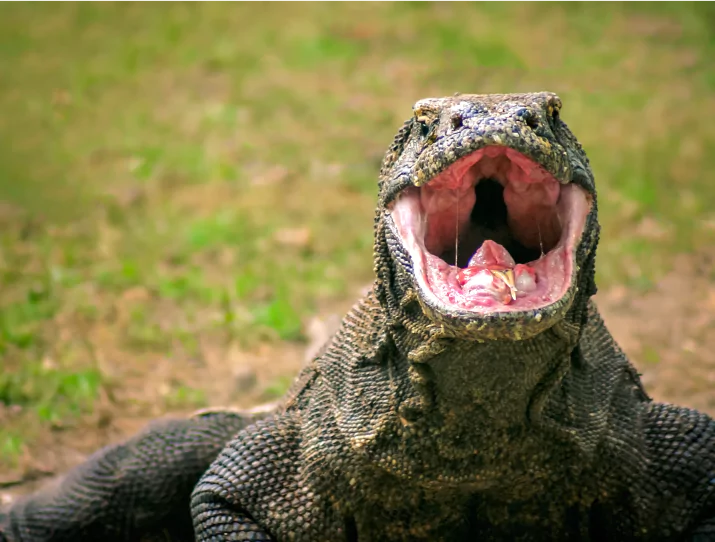
Varied Landscape
The Komodo dragon’s habitat stands out for its intricate and diverse landscape. These islands showcase a blend of rugged coastlines, lush forests, vast savannas, and arid grasslands. This multifaceted terrain forms a complex mosaic of environments that the dragons have expertly adapted to over countless generations.
The topography of the Komodo dragon’s habitat is a tribute to the distinctive geological history of the Lesser Sunda Archipelago. The dynamic interplay of volcanic activity, erosion, and climatic shifts has given rise to this varied landscape, shaping the dragons’ existence in extraordinary ways.
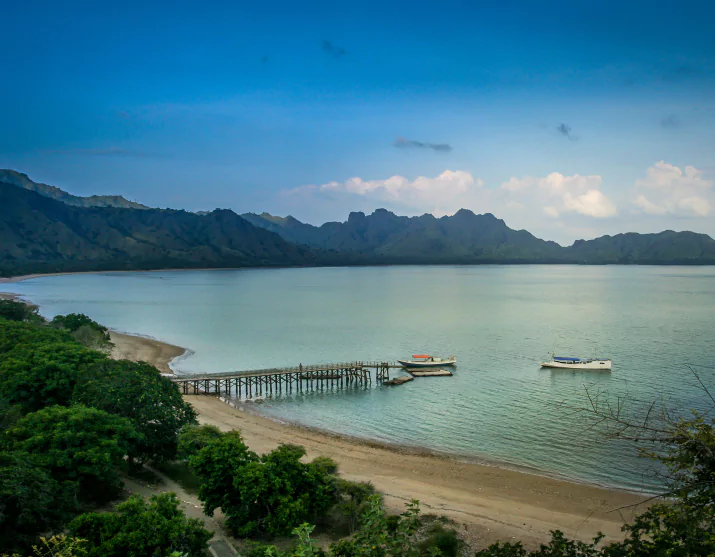
Coastal Areas
The rugged coastlines of the Komodo dragon’s habitat offer a critical environment for these reptiles. They often utilize the rocky shores for basking, a behavior that helps regulate their body temperature. Additionally, the coastal regions are essential for the dragon’s diet, as they frequently forage on carrion washed ashore by ocean currents.
The coastal areas provide a unique combination of resources for the Komodo dragons. They serve as sunbathing spots, allowing the reptiles to warm their bodies before hunting or digesting meals. Furthermore, the proximity to the sea ensures a steady supply of carrion, which the dragons rely on during lean times.
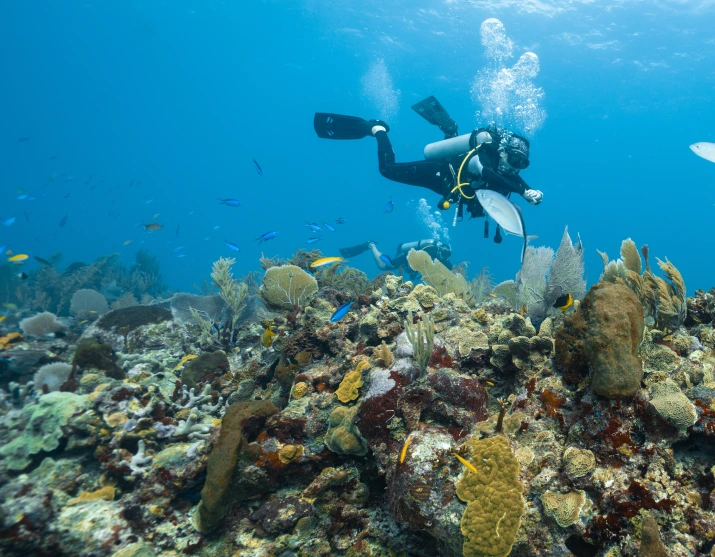
Lush Canopies
Enveloped by the lush tropical canopies that adorn portions of Komodo and Rinca islands, the Komodo dragons find vital sanctuaries. These verdant realms provide them with shelter, shielding them from potential threats and serving as a fertile hunting ground. Prey abounds in these forests, with deer, wild boar, and various avian species forming a diverse menu.
The Komodo dragon’s uncanny prowess in navigating the forest floor and ascending trees in pursuit of prey underscores their remarkable adaptability. Amidst the thick vegetation, they effortlessly blend with their surroundings, becoming elusive predators that employ stealth and precision in their stalking endeavors.

Arid Grasslands and Savannas
The arid grasslands and vast savannas that adorn these islands offer a haven for a rich variety of herbivorous animals, converting them into prime hunting grounds for the Komodo dragons. This expansive, open terrain presents an optimal environment for these reptiles to deploy their predatory abilities with precision, harnessing their unmatched speed and formidable strength to capture their unsuspecting prey.

Challenging Weather Patterns
The environmental conditions prevailing within the domain of the Komodo dragon can be succinctly described as a tropical savannah climate distinguished by marked wet and dry seasons. The dry period, spanning from May to November, introduces a harsh environment characterized by parched landscapes and searing temperatures. In this arid spell, water resources become increasingly scarce, and the Komodo dragons must adeptly employ their moisture-preserving abilities to endure.
Conversely, the wet season, stretching from December to April, ushers in a dramatically different scenario. Heavy rains descend upon the landscape, revitalizing depleted water sources and instigating a flurry of activity among the prey species dwelling within the region. This cyclical shift in weather patterns plays a pivotal role in shaping the behaviors and survival strategies of the formidable Komodo dragon.
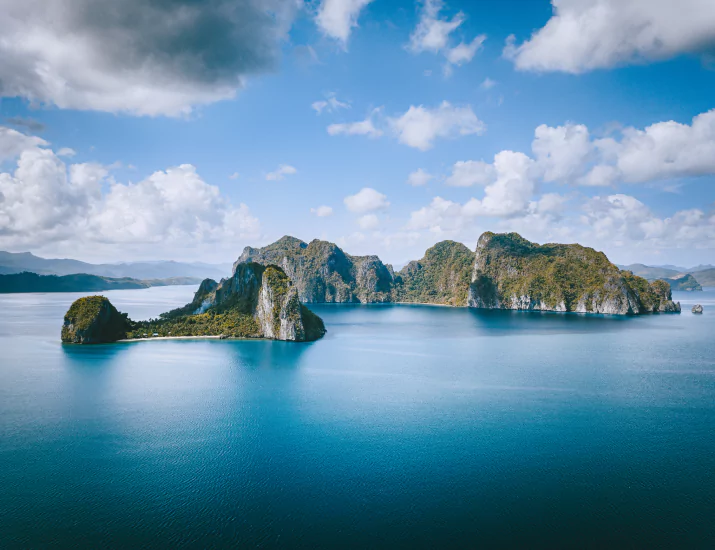
Thriving Amidst the Arid Heat
The formidable climate of the Lesser Sunda Archipelago exerts a profound influence on the behavior and physical characteristics of the Komodo dragons. These remarkable reptiles demonstrate an extraordinary ability to adapt to the challenging conditions of both the dry and wet seasons, underscoring their inherent resilience.
Amidst the harsh expanse of the dry season, water sources become scarce, compelling the Komodo dragons to rely on their specialized adaptations to mitigate water loss. It is a common spectacle to observe these majestic creatures seeking refuge in burrows, strategically retreating to escape the scorching heat while simultaneously reducing their metabolic activity to conserve precious energy reserves.
The prowess displayed by the Komodo dragons in navigating the extreme climate fluctuations of their habitat underscores their remarkable ability to endure and thrive in one of the world’s most challenging environments.

The Wet Season
In stark contrast to the arid dry season, the wet season heralds a resurgence of life on the islands. It is a time of plenty for the Komodo dragons as the environment undergoes a dramatic transformation, influencing their hunting and feeding behaviors.
As the wet season arrives, it ushers in a remarkable metamorphosis across the landscape. Streams begin to flow, and ponds fill with life-giving water, presenting the Komodo dragons with abundant drinking sources. This rejuvenation of water sources plays a pivotal role in the dragons’ ability to thrive during this period.
Moreover, the increased moisture levels stimulate the growth of vegetation, creating lush oases within the savannahs and grasslands. These green havens serve as magnets for herbivores, drawing them in search of fresh forage. For the Komodo dragons, this translates into a prime opportunity to capitalize on the influx of prey.
The wet season not only replenishes water supplies but also triggers a cascading effect throughout the ecosystem. It revitalizes the flora, enticing herbivores with a succulent buffet of foliage. As herbivore populations surge, so does the prey base for the Komodo dragons. This surge in available prey ensures that the dragons have ample opportunities to feed and sustain themselves, ultimately influencing their hunting strategies and behaviors.
The wet season is a crucial chapter in the story of the Komodo dragon’s habitat. It demonstrates the intricate interplay between climate, water availability, vegetation growth, and prey abundance, all of which influence the dragons’ survival and behavior in this unique ecosystem.

Biodiversity and Ecosystem Interplay
The complexity of the Komodo dragon’s habitat revolves around the intricate web of biodiversity and ecosystem interactions that sustain these magnificent reptiles. Amidst the isolation of these secluded isles, a captivating tableau of botanical diversity flourishes, featuring stately tropical hardwood giants, tenacious shrubs, and verdant grasses. This botanical symphony serves a dual purpose, acting as both sanctuary and nourishment for the creatures that form the lifeblood of these magnificent dragons’ existence.

Prey Species
The Komodo dragon’s menu primarily features substantial herbivorous options, including Timor deer (Rusa timorensis), wild boar (Sus scrofa), and water buffalo (Bubalus bubalis). These herbivores freely traverse the grasslands and woodlands of the islands, fulfilling their vital role as the main culinary attraction for the dragons.
The existence of these substantial herbivores in the habitat is a striking testament to the ecological equilibrium within the Komodo dragon’s realm. The plentiful presence of these prey species is pivotal, ensuring that the dragons can uphold robust populations and retain their status as apex predators within the ecosystem.
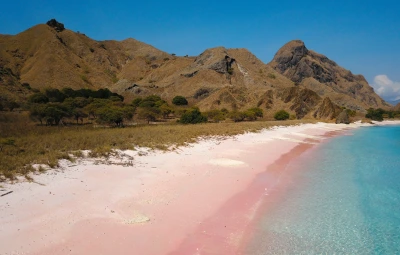
Coexisting Species
The Komodo dragon’s habitat is a haven for several unique and native species, adding to its rich biodiversity tapestry. Among these remarkable creatures are the vibrant orange-footed scrubfowl (Megapodius reinwardt), the majestic yellow-crested cockatoo (Cacatua sulphurea), and the indigenous Sunda deer (Rusa timorensis floresiensis). These remarkable species, in conjunction with the Komodo dragon, significantly enrich the region’s ecological diversity.
The presence of this diverse array of species underscores the intricate interplay of life within the Komodo dragon’s habitat. Each of these species plays a vital role in the ecosystem, and their interactions intricately weave the fabric of the environment’s overall health and equilibrium.

Threats to Biodiversity
The extraordinary biodiversity found within the Komodo dragon’s natural environment is truly remarkable, yet it confronts a series of formidable challenges. Human activities, notably logging and extensive development, have inflicted severe damage upon these pristine island ecosystems, rendering habitat destruction a pressing and substantial threat.
Invasive species such as feral cats and pigs have forcefully intruded upon this delicate ecosystem, wreaking havoc and disturbing the natural equilibrium. These interlopers engage in competition with native wildlife for vital resources, further unsettling the intricate ecological balance that defines this unique habitat.
The perpetual jeopardy stemming from human activities remains a grave concern. The relentless encroachment of development and the introduction of non-native species present an ever-growing impediment to the preservation of this extraordinary habitat, where the survival of the Komodo dragon and the biodiversity that thrives alongside it hangs in the balance.
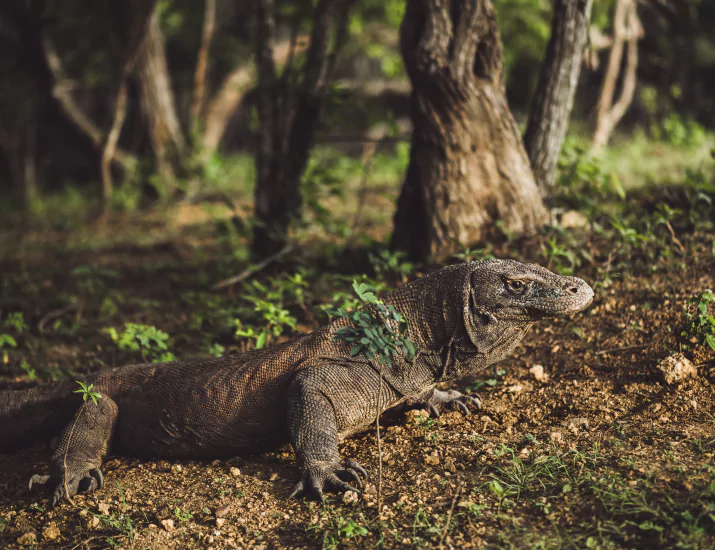
Conservation Challenges
Preserving the Komodo dragon’s habitat is a complex endeavor that requires addressing various challenges. Conservation efforts have focused on both the dragons themselves and the fragile ecosystems they inhabit.
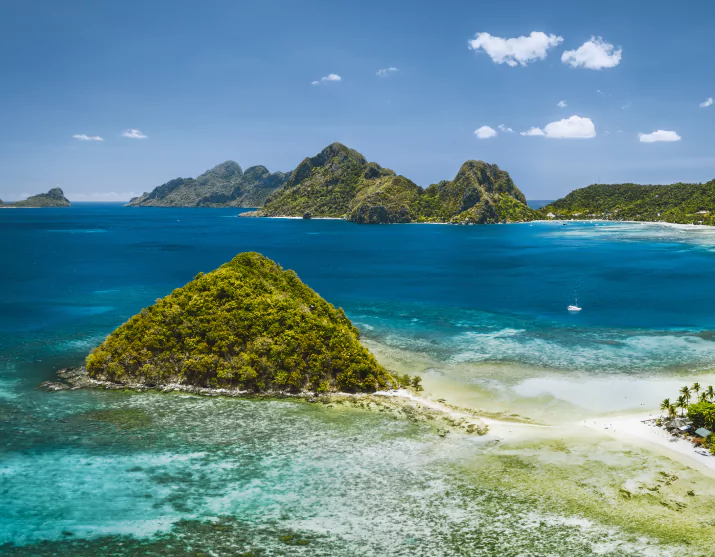
Combating the Illicit Wildlife Trade
The unique and captivating nature of Komodo dragons has rendered them susceptible to poaching and participation in the illegal wildlife trade, casting a dark shadow over their population. This menacing issue presents a substantial menace to the survival of these remarkable reptiles, as they are frequently ensnared and subsequently peddled in underground markets.
The imperative to address this crisis is underscored by the necessity for stringent law enforcement measures and comprehensive public awareness campaigns.
The menace of poaching looms large on the landscape of Komodo dragon conservation. Fuelled by a relentless demand for these reptiles in both the exotic pet trade and traditional medicine sectors, illegal hunters actively engage in the surreptitious capture and distribution of these animals.
Conservation organizations and dedicated law enforcement agencies remain unwavering in their commitment to thwart these illicit activities, fervently striving to quell this perilous trade and ensure the protection and survival of the species.
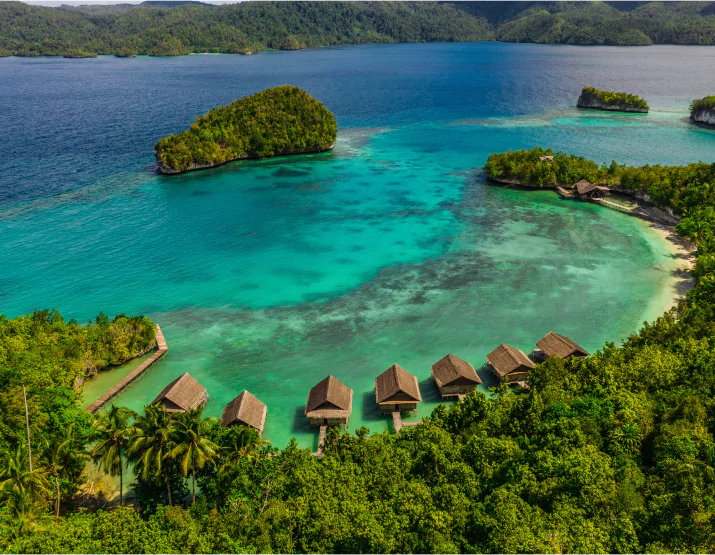
Habitat Erosion
The relentless erosion of the Komodo dragon’s natural habitat, brought about by the relentless onslaught of deforestation, agricultural sprawl, and infrastructure expansion, casts a long shadow over their existence. Conservation entities have rallied to the cause, striving to carve out sanctuaries and advocate for ecologically sustainable land management practices as a bulwark against these encroaching threats.
The gradual erosion of the dragons’ habitat stands as an emblem of the manifold human-induced factors, including rampant logging, expansive agricultural activities, and the relentless march of tourism development. These cumulative actions exacerbate habitat loss and fragmentation, posing formidable challenges to the Komodo dragons in their quest for viable prey and the maintenance of robust populations.

Climate Change
The specter of climate change casts an ominous shadow over the Komodo dragon’s natural habitat. As global temperatures rise and weather patterns shift, the islands’ ecosystems face unprecedented challenges. These changes can potentially disrupt the distribution of prey species and impact the dragons themselves.
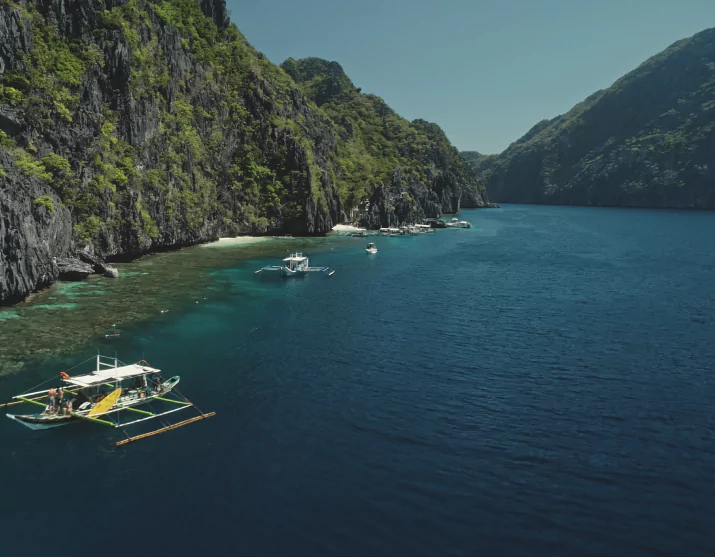
Conservation Initiatives
Recent years have witnessed a surge in initiatives aimed at safeguarding the Komodo dragon and its habitat. Conservation entities, governmental bodies, and local communities have come together, forging partnerships to execute a range of tactics.
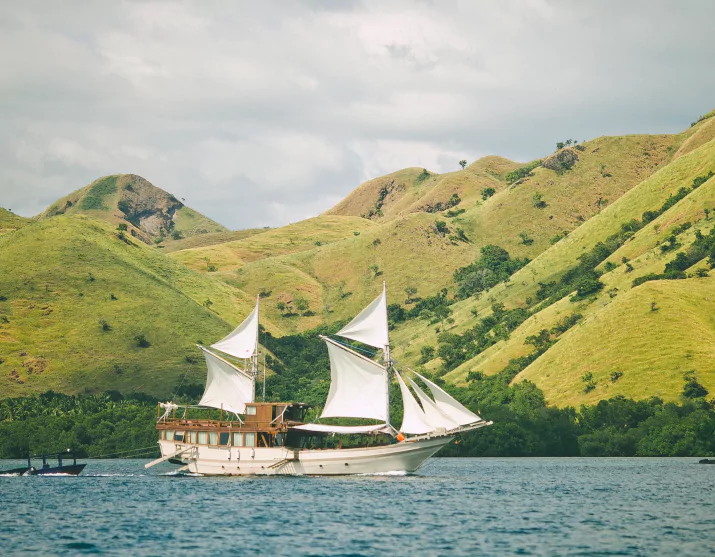
Preserving Sanctuaries
The establishment of Komodo National Park in 1980 marked a crucial step in securing the habitat of the Komodo dragon. This UNESCO World Heritage Site encompasses the islands of Komodo, Rinca, and Padar, serving as an invaluable refuge for both the formidable dragons and their prey.

Research and Monitoring
Scientific research plays a crucial role in understanding the Komodo dragon’s biology, behavior, and habitat requirements. Conservationists conduct ongoing studies and monitoring efforts to assess population trends and inform management strategies.
Research efforts encompass a wide range of activities, from studying the dragons’ feeding habits to tracking their movements and population dynamics. The data collected from these studies contribute to evidence-based conservation decisions.
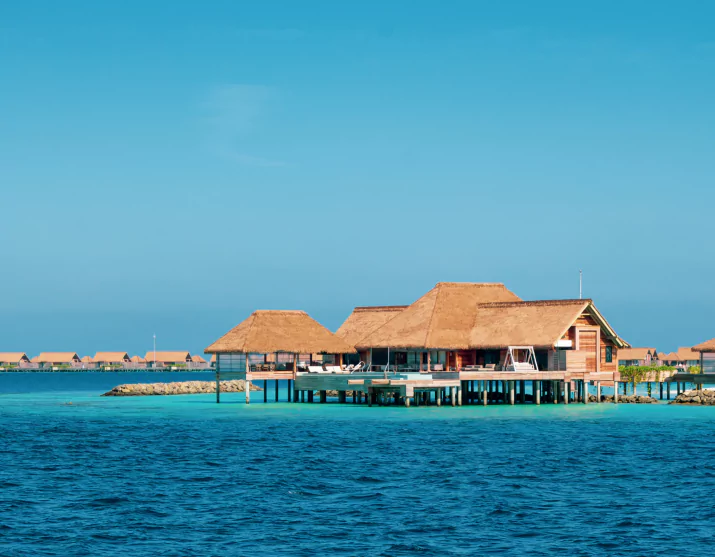
Promoting Education and Environmental Awareness
In the continuous mission to protect the Komodo dragon’s natural habitat, an essential aspect revolves around education and the dissemination of awareness regarding the imperative need for its conservation. Inculcating a sense of ownership for the ecological heritage of these islands within the local communities plays a pivotal role in this endeavor.
Conservationists maintain a close partnership with the local communities, working collaboratively to formulate educational schemes and initiatives that advocate sustainable practices, promote eco-tourism, and encourage active community engagement in safeguarding the dragon’s habitat. These coordinated initiatives are carefully designed to nurture a collective sense of responsibility and guardianship towards the environment.
The environment that accommodates the Komodo dragon is a multifaceted and ever-evolving ecosystem that has undergone countless centuries of transformation to nurture one of the most captivating reptiles on our planet. In the face of escalating threats posed by human interventions and shifting environmental dynamics, the imperative for conservation endeavors has never been more pronounced.
Safeguarding the habitat of the Komodo dragon transcends mere preservation of an iconic species; it extends to the protection of the thriving biodiversity that thrives in these remote and enigmatic islands. By recognizing and acknowledging the intrinsic worth of this unparalleled habitat, we can rally together, hand in hand, to guarantee that the Komodo dragon continues to roam its ancient dominion, an enduring symbol of nature’s resilience, for the benefit of generations yet unborn.